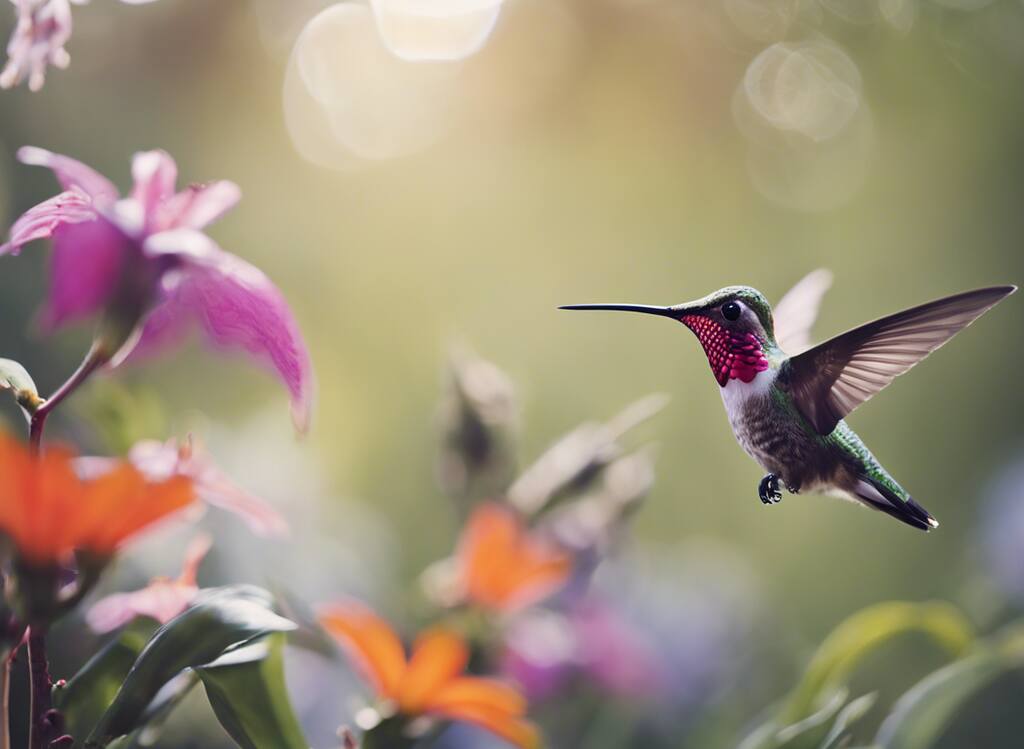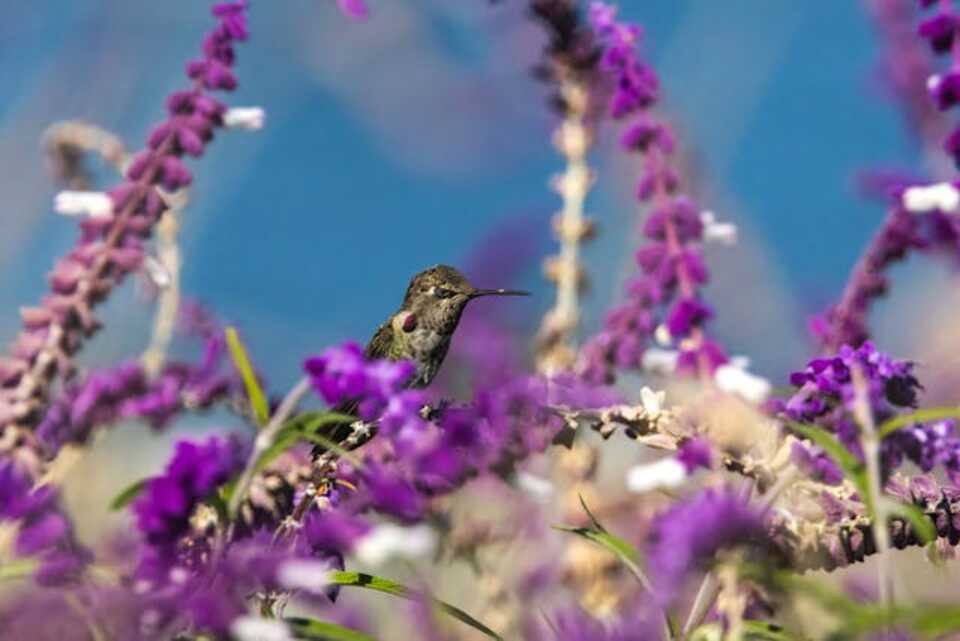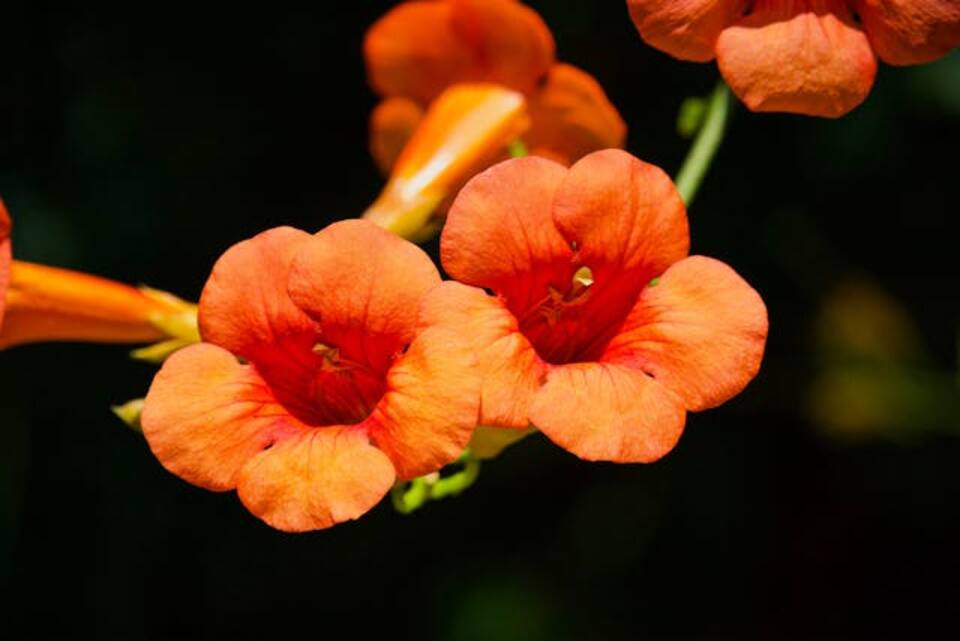Hummingbirds are fascinating creatures known for their agility and beauty. One way to attract these delightful birds to your garden is by planting flowers that they love. Here are the top 5 flowers that can help create a welcoming environment for hummingbirds.
Table of Contents
Top 5 Flowers that Attract Hummingbirds
1. Hibiscus
Hibiscus is a vibrant and eye-catching flower that is sure to attract hummingbirds with its rich nectar. These trumpet-shaped blooms come in a variety of colors, including red, pink, and orange, which are especially appealing to hummingbirds. Planting hibiscus in your garden will not only attract these lovely birds but also add a tropical flair to your outdoor space.
2. Lilac
Lilacs are known for their fragrant clusters of flowers that bloom in spring. These sweet-smelling blooms are not only attractive to humans but also to hummingbirds. The nectar of lilac flowers is a favorite of hummingbirds, making them a must-have in a bird-friendly garden. Planting lilac bushes will not only enhance the beauty of your garden but also provide a source of food for visiting hummingbirds.
3. Bee Balm
Bee balm, also known as Monarda, is a native North American plant that produces vibrant, tufted flowers in shades of red, pink, and purple. Hummingbirds are highly attracted to the tubular shape of bee balm flowers, as it allows them to easily access the nectar inside. By planting bee balm in your garden, you can create a visually stunning display while also attracting hummingbirds to your outdoor space.
4. Salvia
Salvia is a popular choice for hummingbird gardens due to its long blooming period and the abundance of nectar it provides. These spiky flowers come in a variety of colors, including red, purple, and blue, all of which are known to attract hummingbirds. Planting salvia in your garden will not only attract these beautiful birds but also add a pop of color that will brighten up your outdoor space.
5. Trumpet Vine
Trumpet vine, also known as Campsis radicans, is a vigorous climber that produces large, trumpet-shaped flowers in shades of orange and red. These showy blooms are irresistible to hummingbirds, making trumpet vine a popular choice for bird-friendly gardens. Planting trumpet vine along a trellis or fence will create a stunning visual display while providing a valuable food source for hummingbirds.
Attracting hummingbirds to your garden is a rewarding experience that can be easily achieved by planting the right flowers. By incorporating hibiscus, lilac, bee balm, salvia, and trumpet vine into your outdoor space, you can create a haven for these delightful birds while enhancing the beauty of your garden. So why wait? Start planting these hummingbird-friendly flowers today and enjoy the fluttering visits of these charming creatures.
Creating a Hummingbird-Friendly Garden: Best Practices
Hummingbirds are fascinating creatures known for their vibrant colors and incredible agility. One of the best ways to attract these beautiful birds to your garden is by planting flowers that they love. By creating a hummingbird-friendly garden, you can not only enjoy the sight of these amazing birds but also contribute to their well-being. Here are some best practices to help you create a garden that will attract and nourish hummingbirds.
Choosing the Right Flowers
When selecting flowers for your garden, opt for varieties that are rich in nectar. Hummingbirds are particularly attracted to bright colors such as red, orange, and pink. Some of the top flowers that hummingbirds love include trumpet vine, bee balm, salvia, and petunias. Planting a mix of tubular-shaped flowers will ensure a diverse and inviting garden for these birds.
Planting for Success
To create a welcoming environment for hummingbirds, plant your flowers in clusters or groups. This makes it easier for the birds to spot the blooms and access the nectar they provide. Additionally, consider planting flowers of varying heights to provide different levels for hummingbirds to perch and feed.
Providing Water Sources
In addition to nectar-rich flowers, hummingbirds also need a water source to stay hydrated and maintain their plumage. Consider adding a birdbath or fountain to your garden to create a welcoming oasis for these birds. Make sure the water is clean and shallow to ensure the safety of the hummingbirds.
Maintenance and Care
To keep your hummingbird-friendly garden thriving, regular maintenance is key. Deadhead flowers to promote new growth, remove any weeds that may compete with your plants for nutrients, and monitor the health of your flowers. Proper care will not only attract hummingbirds but also enhance the overall beauty of your garden.
Avoiding Pesticides
When creating a garden to attract hummingbirds, it is important to avoid using pesticides. These chemicals can be harmful to hummingbirds, as well as other beneficial insects. Instead, opt for natural pest control methods such as introducing ladybugs or planting insect-repelling herbs like lavender and mint.
Seasonal Considerations
Hummingbirds migrate seasonally, so it’s important to plant a variety of flowers that bloom at different times of the year. By providing a continuous food source, you can attract hummingbirds throughout the seasons and support them on their long journeys.
Creating a hummingbird-friendly garden is a rewarding experience that allows you to connect with nature and enjoy the beauty of these remarkable birds. By choosing the right flowers, planting strategically, providing water sources, maintaining your garden, avoiding pesticides, and considering seasonal variations, you can create a welcoming habitat for hummingbirds to thrive.
Start planning your hummingbird garden today and get ready to be mesmerized by these tiny, yet extraordinary creatures.
Conclusion
In your quest to attract hummingbirds to your garden, incorporating the top 5 flowers that these magnificent creatures love is crucial. Flowers such as the trumpet vine, bee balm, salvia, penstemon, and columbine will undoubtedly create a paradise for hummingbirds with their vibrant colors and abundant nectar. By strategically planting these flowers, you can draw hummingbirds closer to your home and enjoy the beauty they bring.
Moreover, enhancing your garden to be hummingbird-friendly involves more than just planting the right flowers. Implementing best practices like providing perches for resting, setting up hummingbird feeders with the right sugar-water ratio, avoiding pesticides, and ensuring a water source are essential steps in creating a welcoming environment for these tiny birds. By following these guidelines, you can turn your garden into a sanctuary that not only attracts hummingbirds but also promotes their health and well-being.
Remember to maintain a balance between natural nectar sources like flowers and artificial feeders to support hummingbirds throughout the year, especially during migration periods. By supplementing their diet with feeders while still offering a variety of nectar-rich flowers, you can ensure a consistent food source for these energetic birds. This harmony between natural and artificial food sources will contribute to the overall health and population of hummingbirds in your area.
As you embark on this journey to attract hummingbirds to your garden, keep in mind that patience and observation are key. Hummingbirds are wild creatures, and it may take some time for them to discover and frequent your garden. By staying consistent with providing a reliable food source and creating a safe and inviting space for them, you increase your chances of hosting these delightful visitors regularly.
By incorporating the top 5 flowers that attract hummingbirds and following best practices for creating a hummingbird-friendly garden, you can transform your outdoor space into a haven for these tiny marvels of nature. With dedication, attention to detail, and a deep appreciation for these fascinating birds, you will not only enjoy their presence but also contribute to their conservation and well-being.
So, roll up your sleeves, grab your gardening tools, and get ready to welcome an array of vibrant hummingbirds to your garden!







